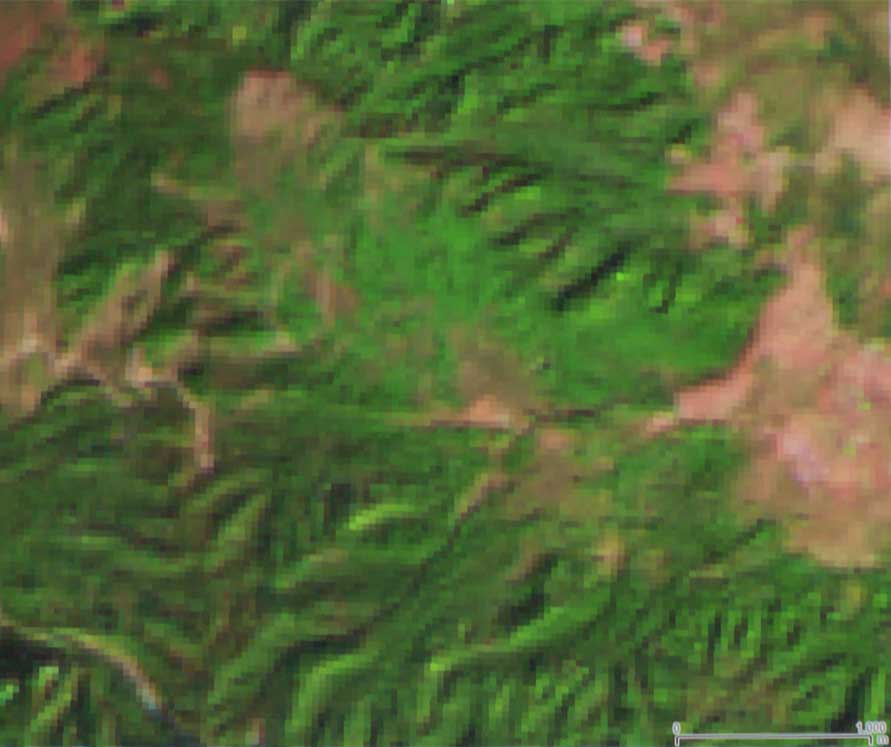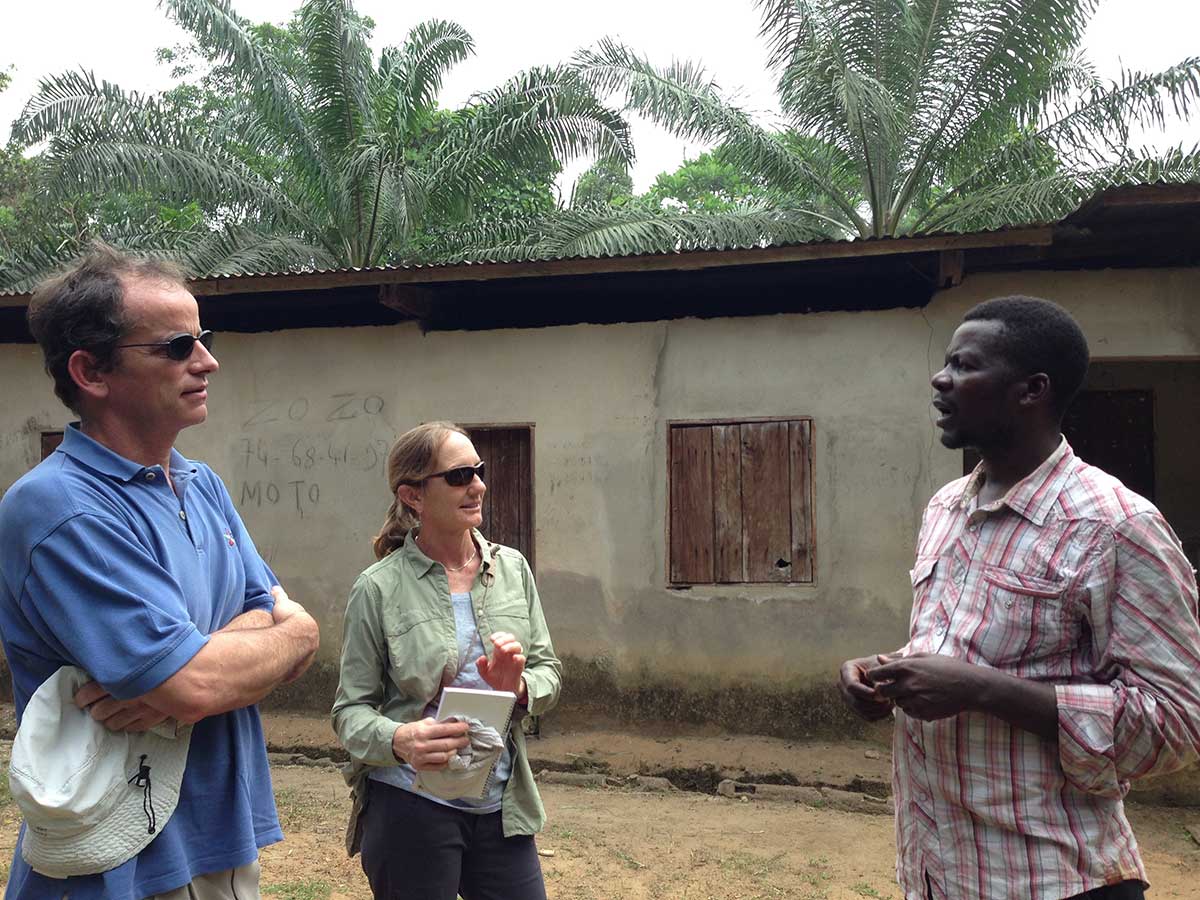Take a look at the satellite image of Bhutan. Green indicates forests and pink indicates the areas where forests have been burned down and destroyed.
This satellite image shows human activity. If we were to enlarge the image, we would find farmhouses and logging companies. People live in this area.

Image of Bhutan
Different researchers conduct a wide range of research in different countries. For example, some conduct research on deforestation in Indonesia, and others conduct such research in Brazil and Guatemala. Because they are in different locations, the causes of deforestation may differ. However, there may be commonalities as well. Comparison allowed researchers to elevate their research on land use to a global scale.
Expanding the scale of environmental protection
Since then, Prof. Lambin has worked to promote the scale of environmental protection.
For example, imagine the life of the notebook you have now.
First, a tree is cut down in a country. The tree is made into paper at a factory, and the paper is made into a notebook at another factory.
The notebook is brought to your country by ship, and a truck brings it to the store where it is purchased by you.














